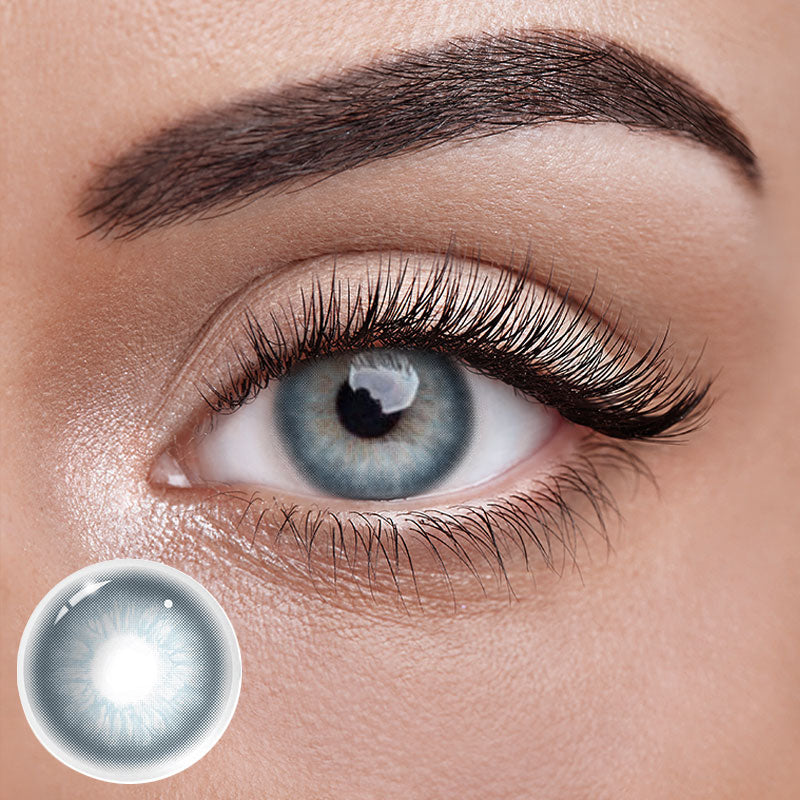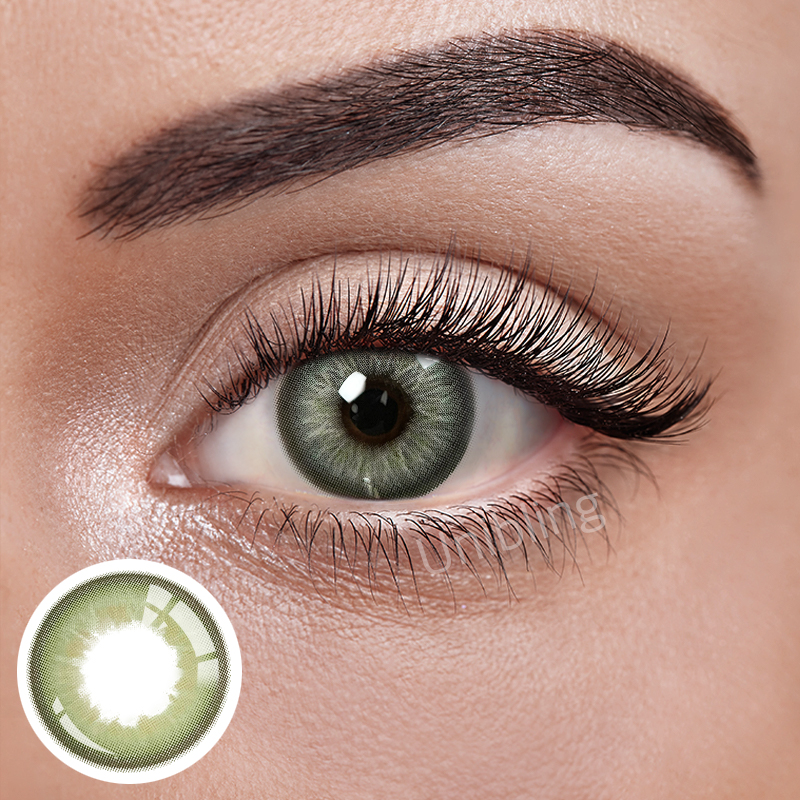Daily, Monthly, or Yearly Disposable Contacts? Which One is Right for You?
Feb 03,2024 | Lee
What are Yearly Contact Lenses? What About Monthly and Daily Disposable Contacts?
Yearly disposable contacts mean contact lenses that are designed for longer-term usage and provide clear vision and comfort. These lenses are meant to be replaced on an annual basis. They offer several advantages, including cost-effectiveness, a range of vision correction options, and comfortable materials. Yearly contact lens is easy to insert due to its great fit and shape. Additionally, Unibling's 1 year contacts are known for their excellent adaptability and ease of use, making them ideal for beginners. The long usage period means good value for money, though daily care is still needed.
What is monthly disposable lens? It means a contact lens that is designed to be worn daily for one to three months and then discarded. Monthly contact lenses are convenient because they don't need to be replaced as often as daily disposable contact lenses, and some can even be worn continuously. However, monthly contact lenses need to be cleaned daily with a cleaning solution. Unibling's monthly contact lenses are slightly more expensive than annual contact lenses, but they stand out for their comfort and ease of use, ensuring a smooth user experience.
-
Daily Disposable Contacts
Daily disposable lenses are thrown away after each day of use, providing convenience without the need for care. However, some daily disposable lenses from certain brands may not match the quality and breathability of longer-wear lenses. Long-term usage accumulates high costs, especially for frequent users. Daily disposables can be a good option for occasional use.
What is the Difference Between Daily, Monthly, and Yearly Contacts?
Daily vs Monthly Contacts
Monthly contact lenses are thicker and more durable than daily lenses. They can resist drying out and are eco-friendlier since fewer lenses are disposed of compared to dailies. Monthly contacts require regular cleaning, disinfecting, and proper storage to prevent infections. The difference between monthly and daily contacts does not mean one is better than the other. You just choose the suitable type.
Yearly vs Monthly Contacts
Yearly contacts offer longer-term use and are typically more durable. They do not require frequent replacements, which can be more convenient in certain situations. Additionally, the lower replacement frequency of yearly contacts can save time and costs. On the other hand, monthly contacts require more regular cleaning than daily disposable lenses.
Daily vs Yearly Contacts
Yearly contacts offer the benefit of longer-term use and durability compared to daily contacts. Daily contacts, because of their single-use design, can generate more waste and may be less cost-effective in the long run. Yearly contacts, on the other hand, provide a sustainable option with less environmental impact and potentially lower overall costs.
| Comparison | Daily | Monthly | Yearly |
|---|---|---|---|
| Wear Period | 1 day | 1 month | 1 year |
| Thickness/Durability | Thinner | Thicker/More durable | Thickest/Most durable |
| Resistance to Drying | Lower | Higher | Highest |
| Eco-Friendliness | More waste | Moderate | Most eco-friendly |
| Cleaning/Storage | No cleaning/storage needed | Regular cleaning/storage required | Regular cleaning/storage required |
| Replacement Frequency | Highest | Moderate | Lowest |
| Overall Cost | Potentially higher | Moderate | Potentially lower |
What Factors Should You Consider When Choosing Disposable Contacts?
With daily, monthly, and yearly disposable contacts available, it's important to consider several factors to make an informed choice that best suits your needs.
Yearly disposable contacts are cost-effective in the long run. With proper care and cleaning, yearly contacts can last for up to 12 months. Monthly disposables, while less expensive than daily options, incur higher costs than yearly lenses due to more frequent replacements. Daily disposables carry the highest cost due to their single-use nature.
-
Prescription:

Unibling's Reef Hazel Yearly Colored Lenses
Yearly disposable contacts are a great option if you have a stable prescription because they offer extended wear. Monthly disposable contacts might be your best bet if your prescription tends to change frequently. Daily disposable contacts are not the go-to choice for those with higher prescriptions.
-
User-friendliness:

Unibling's Ocean Green Yearly Contact Lenses
Beginners can start with yearly disposable lenses. They offer a longer usage cycle, meaning less frequent lens changes and replacements. This reduces the hassle and time spent on purchasing and handling new lenses. Those experienced users can choose what they like according to their needs.
-
Maintenance:
Both yearly disposable contacts and monthly ones need careful maintenance. But a little extra effort goes a long way. Daily disposable contacts require no upkeep or cleaning because they are simply discarded after each use.
-
Lens Material:
The lens material directly influences comfort, eye health, and overall wearing experience. It's essential to select color contact lenses from reputable brands and authorized dealers like Unibling, who comply with stringent safety standards, assuring product safety and dependability.
Unibling's cosmetic contact lenses, crafted from superior Polyhema material, not only provide unparalleled comfort but also prioritize your eye health and satisfaction. These lenses are designed to lower the risk of protein accumulation and bacterial contamination, ensuring you can wear them confidently. Moreover, their UV and blue light-blocking properties protect against the potential damage from ultraviolet rays and blue light, allowing you to enjoy your lenses worry-free.
Find Your Perfect Fit
Yearly, monthly, and daily disposable contacts each have their own advantages. It's important to weigh factors such as cost, prescription, user-friendliness, maintenance and lens material. Consult with an eye care professional to determine the best type of colored contact lenses for your specific needs and vision requirements. Choose Unibling for vibrant and safe colored contacts that prioritize both style and eye care!
FAQs:
Q: Can you wear yearly contacts every day?
A: Yes, you can wear yearly contacts every day, but it is important to follow the guidance of your eye care professional for proper usage and care.
Q: How much do yearly contacts cost?
A: The cost of yearly contacts can vary depending on the type and brand of lenses. Unibling offers affordable one year contacts with the price from $14.99 to $74.99.
Q: How long can you wear yearly contacts?
A: Yearly contacts, also known as yearly disposable color contact lenses, are designed to be worn for up to one year before they need to be replaced.
Q: How to tell if contacts are daily or monthly?
A: You can check the packaging or the prescription label on the box. Daily contacts are typically labeled as "daily disposable" or "single-use," indicating they are meant to be worn once and then discarded. In contrast, monthly contacts will be labeled as "monthly" or "extended wear," signifying they can be worn for up to a month before replacement.
Q: Can I wear monthly contacts for more than a month?
A: It is not recommended to wear monthly contacts for more than a month. Extended use beyond the recommended duration can increase the risk of eye infections, irritation, blurry vision, and other complications.
Q: Do yearly contacts wear my eye more than daily ones?
A: No, there is no need to be worried. Yearly colored contacts, like any contact lenses, can potentially cause discomfort or irritation if not properly cared for or fitted. However, the duration of wear (yearly) does not necessarily correlate with increased risk.
Q: Is it advisable to wear monthly contacts or daily contacts?
A: The choice between monthly and daily contacts depends on individual preferences and needs. Monthly contacts may be more cost-effective, but they require regular cleaning and storage. Daily contacts offer convenience and a lower risk of eye infections since they are discarded after each use.






